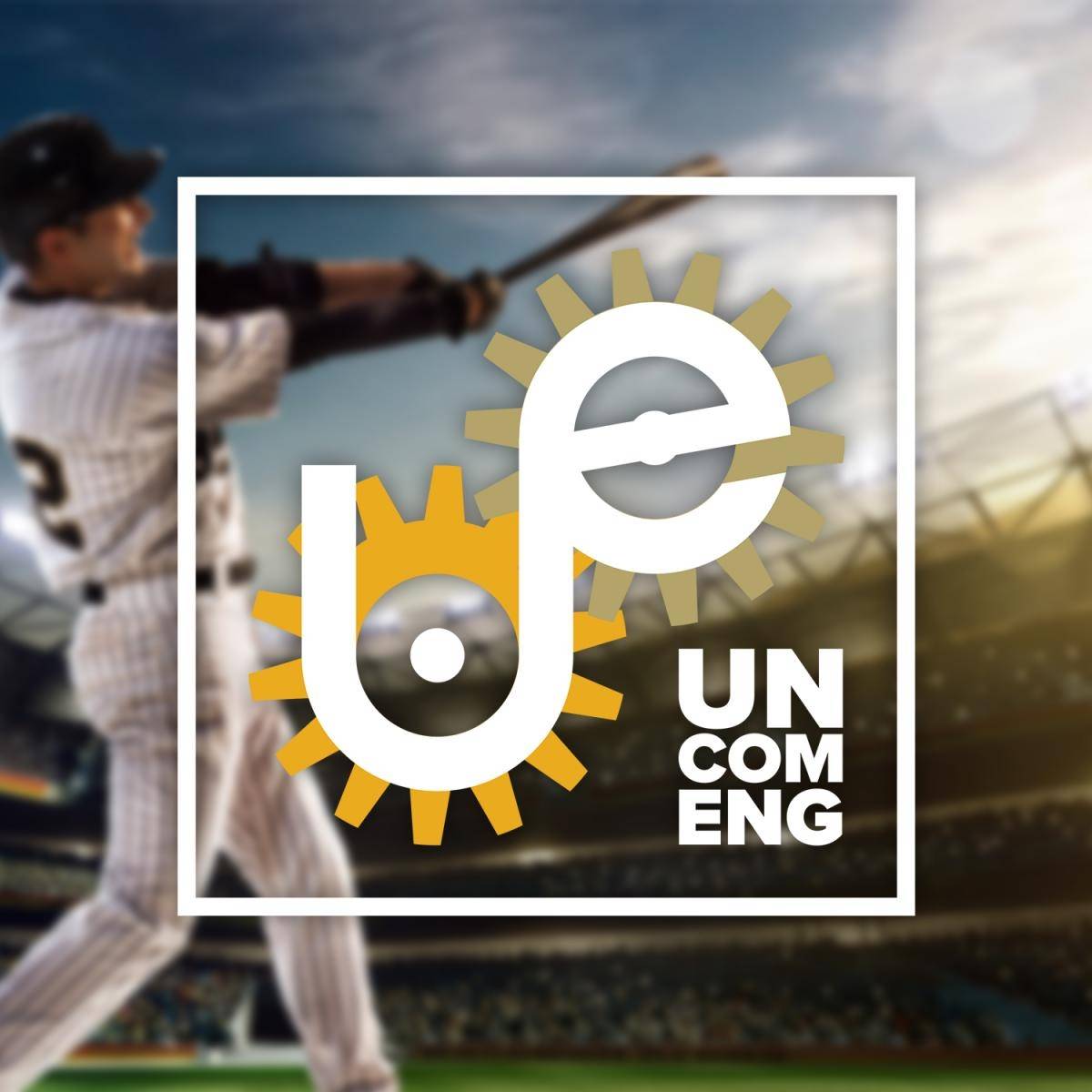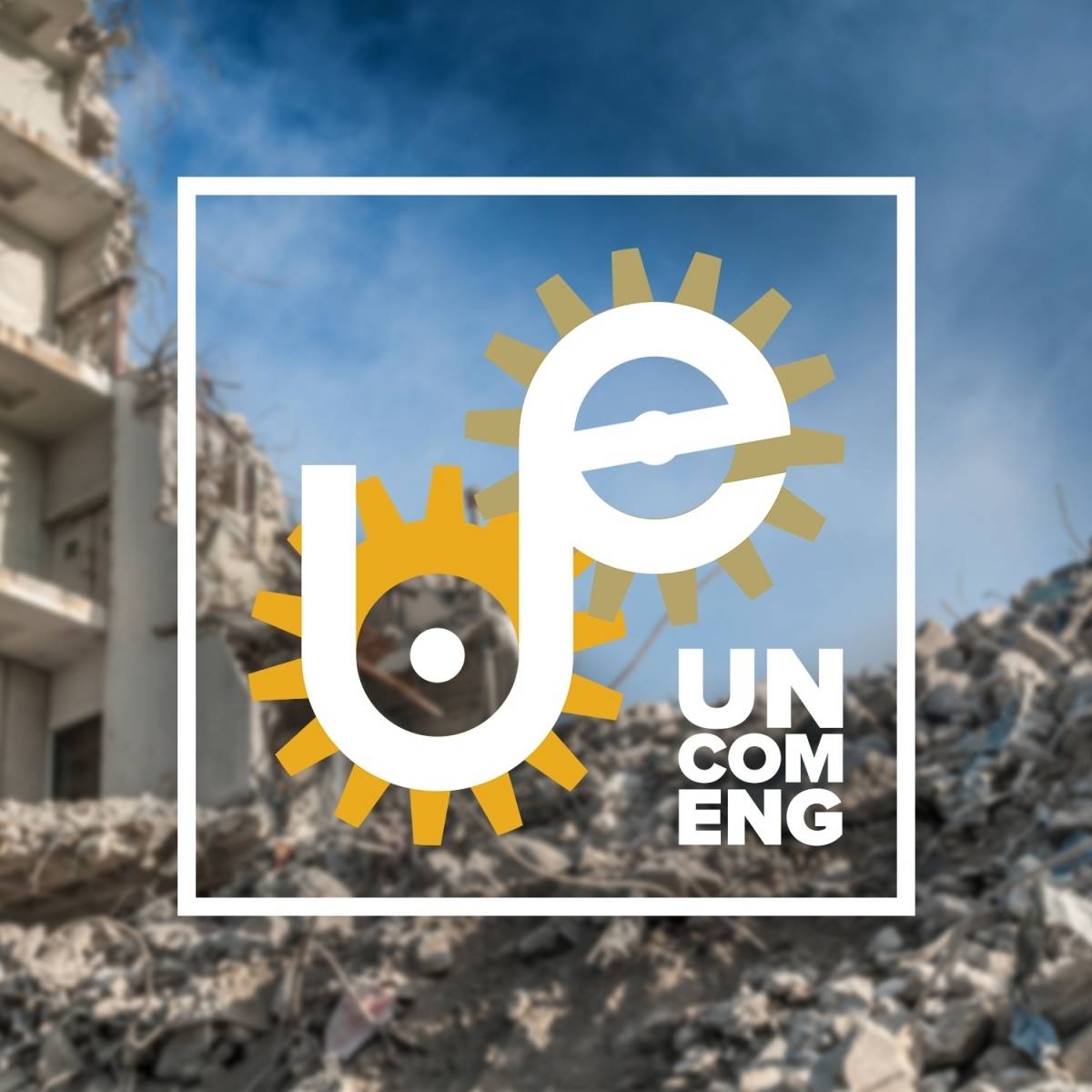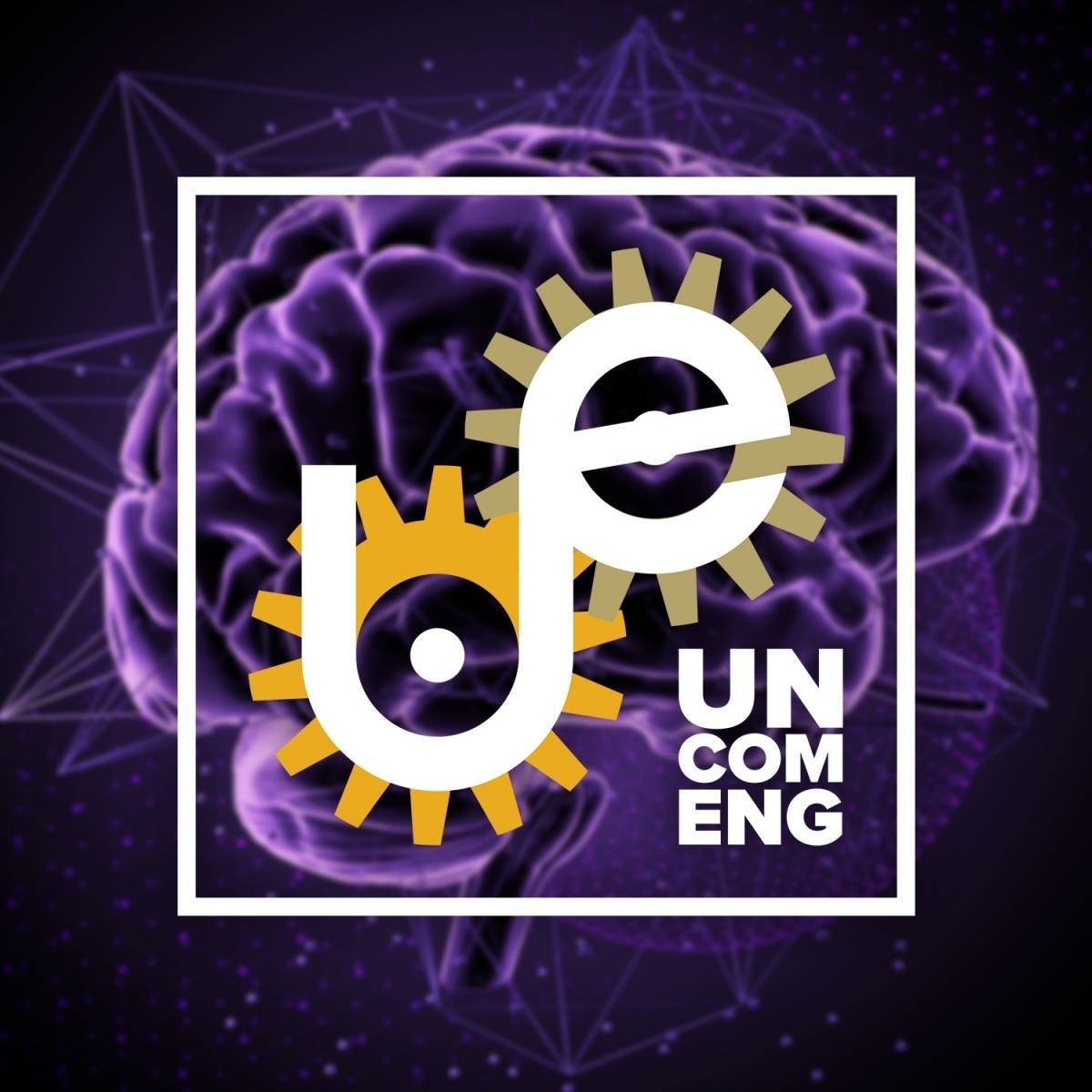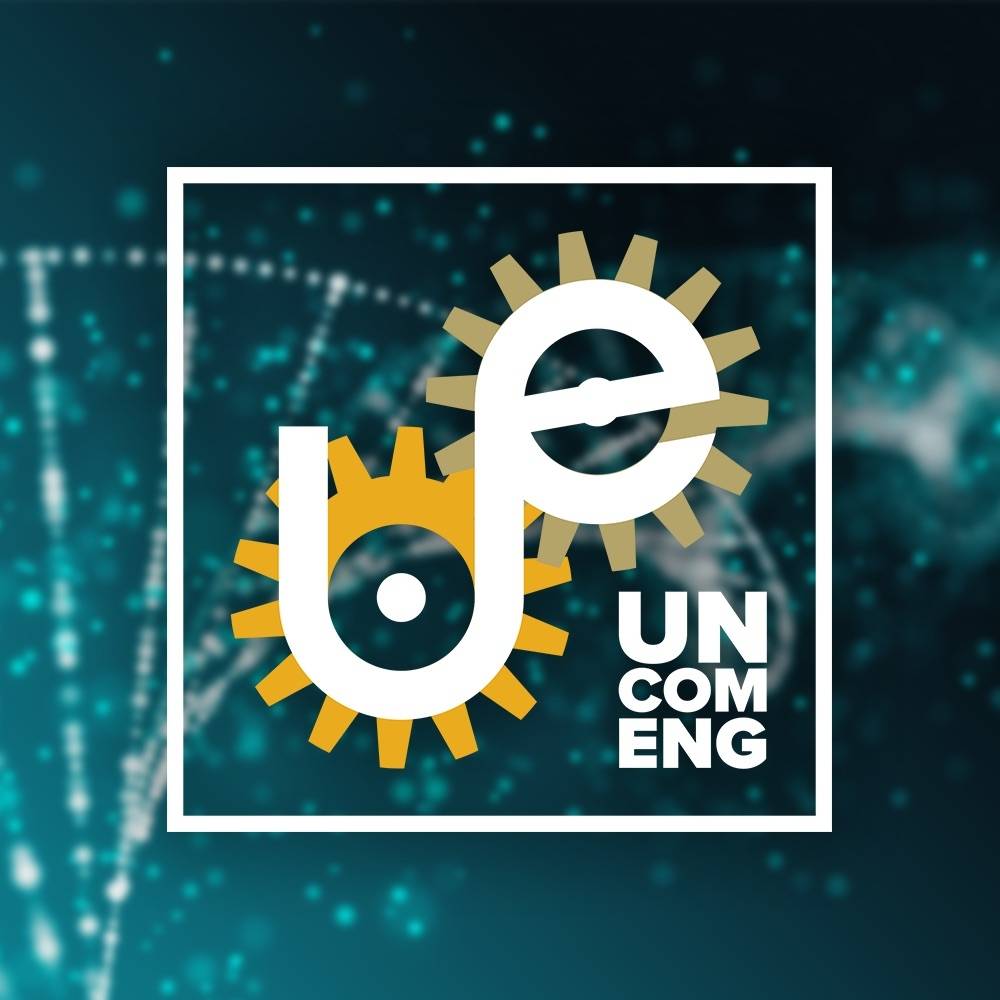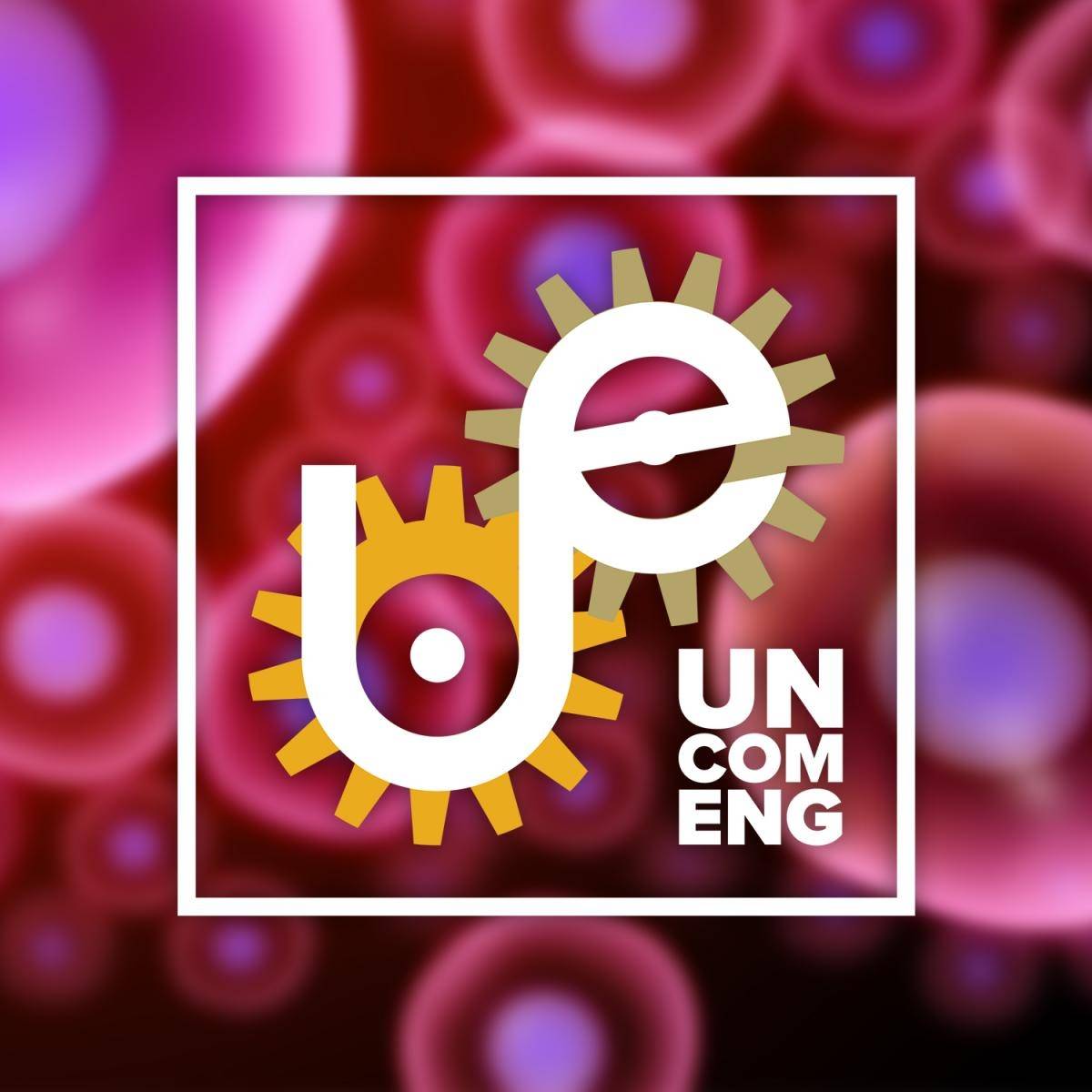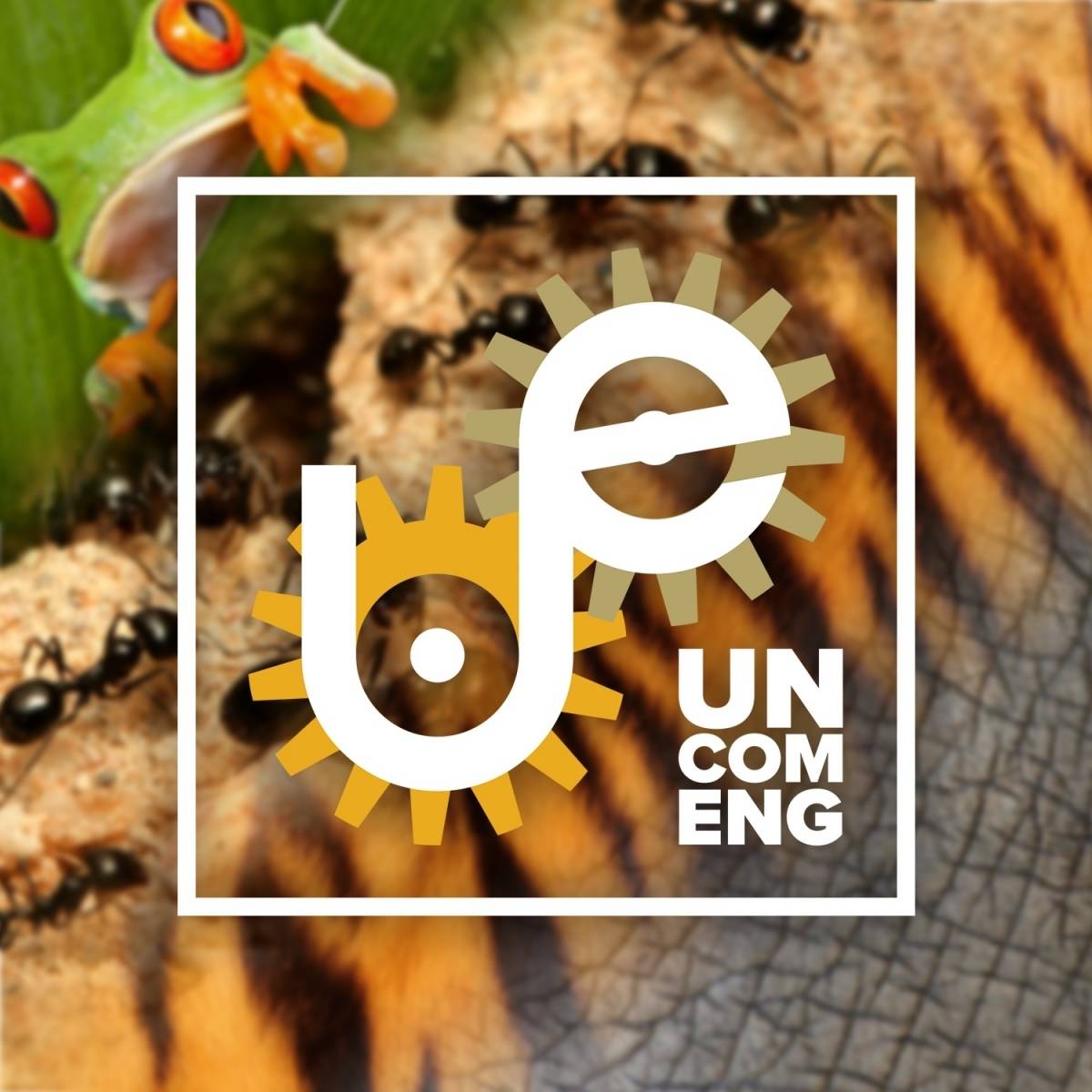Steve W. McLaughlin
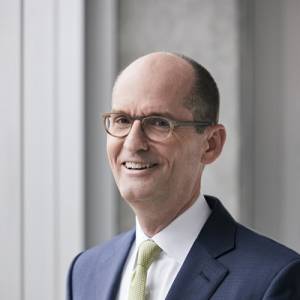
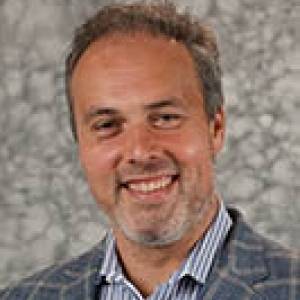
Audio
Audio & Captions
Transcript
[applause]
[marching band music]
Steve McLaughlin: Hi. I’m Steve McLaughlin, dean of the Georgia Tech College of Engineering, and this is The Uncommon Engineer.
Male Speaker: [archival recording] We’re just absolutely pleased as punch to have you with us. Please say a few words.
[music]
Steve McLaughlin: If there's anyone out there that can benefit from advances in sports medicine, it's baseball players. From torn rotator cuffs to knee injuries, playing professional baseball results in wear and tear on the body. Today, innovations in sports medicine are helping both prevent and treat athletic injuries.
Welcome to another episode of The Uncommon Engineer podcast. I'm Steve McLaughlin, dean of the Georgia Tech College of Engineering.
The Uncommon Engineer podcast discusses how Georgia Tech engineers make a difference in our world, in our daily lives, and in ways you might not expect. Our guest today is Dr. Omer Inan. He's a professor in the School of Electrical and Computer Engineering at Georgia Tech, and he's focused on developing clinically-relevant medical devices and systems for patients. A varsity athlete himself from his days at Stanford, Omer has a special interest in sports medicine. Welcome to the program, Omer.
Omer Inan: Thanks for having me here.
Steve McLaughlin: You know, I think one the things we're going to talk about today is both your interest in sports, you know, as an athlete, but also how it relates to electrical engineering and the things that you build and how that folds into your research program. So could you tell us a little bit about your own past as an athlete and how that's led to your interest in electric engineering and sports medicine?
Omer Inan: Sure. Well I think it's important to emphasize the word “past,” you know, so it was a while ago, but I was a discus thrower at Stanford when I was a undergrad there. I trained about three to four hours every day—weight room, plyometrics, hurdles, sprints, throwing of course. It's a very technical sport. You know, most people think that you just kind of get strong and throw the thing, but really it's a lot more than that; you have to learn footwork, and you really have to practice quite a bit. How it relates to engineering—at the time I wasn't really clear on that. At the time it was more of a distraction than anything else.
I wouldn't be able to go to office hours as an electrical engineering student in one of the hardest departments, really. I think that towards my later years there, I started thinking about how engineering and physics relate to discus throwing.
Steve McLaughlin: And if I remember correctly—and we've known each other for a few years, and I remember first meeting you when you interviewed for a faculty position here and, you know, heard about I think it was really either your Ph.D. thesis project that really combined some of the things that you're talking about, and it sounds like that's also led to some really cool and occasionally cringe-worthy sounds and videos and things like that. So, can you talk about, you know, the first real engineering project that combined those two and kind of where it's taken you today?
Omer Inan: When I got to Georgia Tech, I started a project that was more directly relevant to sports medicine and athlete health. And that was an idea that I had that maybe we could, and as gross as it sounds—it sounds even grosser when you listen to it—but to put tiny microphones around the knee and listen to the sounds emitted from the joint while a person moves the leg and specifically extends and flexes the leg to get an idea of if there are structural abnormalities or injuries or maybe wear and tear that could lead to higher risk of injury for that athlete.
[mechanical crackling and grinding sounds]
So that's been some of the work we've been doing here. And that has led me to a bunch of questions and a lot of curiosity about where these things come from: what rubbing of surfaces or crackling of bone against cartilage, or what sort of movement internally actually generates these sounds? How do they propagate to the surface? How can we learn more about how the sounds that we measure externally with non-invasive sensors actually relates to things that are happening inside of the joint?
Steve McLaughlin: Did that idea come from your own personal experience? Because I think, you know, in hindsight now that you talk about it, you know, my own knees crack a little bit here and there. I think they're healthy; I've never had any new problems. But you're saying that, you know, obviously an unhealthy knee or a knee that's gone through surgery or is recovering, you know, makes these different kinds of sounds. Did that come from personal experience or did that come from—where did that—what was the inspiration or aha moment.
Omer Inan: I had, in a lot of ways I guess, a nontraditional sort of path to academia, although now maybe there is no traditional path to academia. But when I finished as a Ph.D student at Stanford in this biomedical engineering-related research, my first job afterwards was as the chief engineer for this professional audio company. So we were building the smallest microphones in the world for really high-performance applications, high-demand applications used in extreme environments. Cave divers would use our microphones to try to record the sounds as they kind of dive through the surface of the water, and people used our microphones in Broadway plays and other sorts of—which doesn't sound like an extreme environment, but when you put a microphone on an actor or actress and they're changing their costume seven different times in about 20 seconds—they're sweating all over it; they have makeup—it actually becomes a really harsh environment for the mic. So there was that side of me that had learned about audio in this really interesting, multi-dimensional and interdisciplinary field that audio and acoustics itself is.
And then I had had this experience myself as an athlete where when you're doing squats with 500 plus pounds for reps, and then you're doing power cleans which is basically this Olympic lift with 350 pounds and you have impact on your knees and your ankles, you felt your joints sort of creak. And it's even more so, of course, for me now. So I think that connecting those two things together as well as in my appreciation that that we need a paradigm shift really in healthcare and medicine towards longitudinal monitoring versus these snapshot exams that happen once every year, once every many years in the doctor's office. All of that together, I think, led to me sort of thinking about how this could be a really interesting thing to study. The number one reason for active duty discharge in the military is actually lower limb musculoskeletal injuries.
Steve McLaughlin: Is that right?
Omer Inan: Yeah. They're carrying these really heavy loads on their back—120 pound plus, you know, and they're marching for tens of miles at a time with those. That creates all kinds of stresses and forces on these joints that the human body is not really designed to tolerate.
Steve McLaughlin: And is your work supported by the Department of Defense or the military services?
Omer Inan: The coolest thing about the Department of Defense is they have this thing called DARPA, and it’s Defense Advanced Research Projects Agency. And they're willing to take risks on exciting high-risk, high-impact sorts of projects. And they funded our idea that we could maybe measure these sounds, that we could learn something from them, and that we could track soldier health, athlete health, civilian health, basically from a very different standpoint, very different paradigm than other people had thought of before. And they were willing to fund it, and that's what first got us the data and excitement level that maybe this is something really interesting to look at. Now we've gotten funding also from National Institutes of Health and National Science Foundation to really understand the different aspects of this from the clinical standpoint and from a really basic scientific standpoint where we're even doing studies in cadaver limbs to be able to uncover some of these really basic questions about where the sounds come from, how different injuries may impact the signatures, how can we really understand propagation along different tissues and different sorts of pathways.
Steve McLaughlin: And so we tend to think of Georgia Tech engineers as bridge builders, car makers, people that make microelectronics or energy-related things, but now there's, through work like yours, there's a real pathway to patients, and that's a relatively new thing at Georgia Tech, you know, for only the last 20 years in our relationship with Emory and Children's Healthcare of Atlanta, and various other organizations. And so you just talked about kind of clinical relevance of the work that you're doing, and so can you talk about how, you know, this is not just in your own lab and how close are you getting to patients and how that affects your research and really what that means for Georgia Tech?
Omer Inan: Yeah. This is one of the things that is really overlooked, maybe, about Georgia Tech is that we're in such a great place to be able to do this type of highly collaborative interdisciplinary research. And the fact that Emory Medical School is just 15-20 minutes away; Children's Healthcare is right there as well, and these are networks that treat so many patients in the Southeast. You know, people will come here from Alabama sometimes, from all over, really, this region to be treated because of the excellent level of care they can get. But there's also physician-scientists there who are really excited about teaming up with engineers to work on some of these problems which is what makes it such a productive and synergistic partnership, I think, between the institutions. And the number one reason I think why this place is such a perfect sort of university and institute to do this kind of research is I think because of the highly collaborative and supportive environment to do these sorts of team-based projects. These are really hard problems. There are big problems in healthcare and it takes a lot of different minds getting together to be able to address them. They shouldn't be handled in a siloed, traditional academic fashion; they should be handled through teamwork.
Steve McLaughlin: And so are your students or yourself working directly with patients?
Omer Inan: We always do. Yeah, I have students who will head over to Emory once a week, sometimes twice a week, collect data from patients there. We team up with physicians there who will give us insight. Sometimes we'll even talk to patients and their families to get information on what might be a really usable and feasible version of our work that could really make an impact. I think it's really important to have that kind of direct interface and discussion and data collection and sort of interaction with patients and their families to be able to make this work really one day translate. We also have this thing here called the Georgia CTSA, Clinical and Translational Science Alliance between Georgia Tech, Emory, Morehouse School of Medicine, and UGA. And that's another one of these NIH-funded—National Institutes of Health-funded—fantastic infrastructure kind of resources that we have here that brings these different stakeholders and parties together to work on these problems specifically with the task of getting science from the lab out to clinical settings and to impact patients.
Steve McLaughlin: What's so exciting about everything you're saying, at least to me as an electrical engineer, is people don't often think of electrical engineers as working and talking with patients and doing that direct work. You tend to think of it’s the physicians that do that or the nurses or nurse practitioners and so on, and that's really exciting. What are the kind of things you're working on now? What are the—because I know you're working on other than crunching knees and getting the sound and all that—what are the kinds of things you’re working on now?
Omer Ian: We have a couple of really exciting projects that have just started up. One of them, which is funded through the Office of Naval Research, is aimed at trying to quantify somebody’s blood volume status. And that's one of these things that's a really ambiguous and tough to quantify aspect of the physiology, especially out on the battlefield. But it's so important because you have soldiers who are hemorrhaging, who are losing blood because, let's say, they've been shot or there's been some explosion, but there's something that's occurred, and there has to be some way for medics to be able to triage who needs to be transported first, sometimes miles or tens of miles away to the point where they can really be treated. And it's very hard from basic vital sign measurements—say, blood pressure, heart rate, temperature—to be able to determine who is really at risk of cardiovascular collapse and who needs to be most urgently treated. There's also efforts to try to automate the delivery of fluid resuscitation for these sorts of patients. And to do that, you have to have some understanding of what that person’s status is at that moment. Are they really sort of in the red category where they're losing so much blood that they need to sort of be treated immediately? Are they maybe able to tolerate it at that time and so maybe the other soldiers or war fighters can be treated first? And this is also a big problem outside of DOD applications for trauma patients, right, car accidents. It's always a concern to be able to determine what someone's blood volume status is. So we're working with these wearable, non-invasive sensors. It would maybe be on the form factor a patch or maybe something that goes around the patient's arm. And that paired with some sophisticated artificial intelligence algorithms would be able to extract markers or features from those signals that actually relate to blood volume status.
Steve McLaughlin: What I'm hearing a lot about is kind of “the new medical school.” I don't mean specifically around that, because some universities—the one that I'm thinking of University of Illinois has created a new medical school that's within engineering. And the idea is to train doctors as much from the medical side as the engineering side. How much engineering does a doctor need to know today and how much engineering would a doctor need to know in 5, 10 or 20 or 50 years?
Omer Inan: It's a great question. Maybe I'll start by saying that as much as it's important for doctors to learn engineering, it's important for us as engineers to learn about medicine especially if we're gonna be anywhere near that space. That we should definitely do at Georgia Tech, and we do already through courses, my courses, teach some physiology to engineers. They don't have to have any background in biology or physiology to take them. So just a quick plug for courses so people can take them. But the flip side of it is absolutely there's no question that doctors will have to learn about these concepts. For the past maybe 20 or 30 years, neural nets—longer than that—neural nets and other sorts of machine learning algorithms have existed. And I think doctors have been quick to kind of dismiss them because they're so black box and because they feel that they need to have the control and understanding of what an algorithm is doing, lookup tables, decision trees, that kind of thing. Of course that's perfectly fine; that's what they do—flow charts. But anything where the details of why you're getting from measurement to diagnosis are obfuscated in some way made them uncomfortable. That's really changing now.
Steve McLaughlin: So we talked about a couple of different things happening in your lab but, as I've experienced, almost all Georgia Tech professors have some crazy ideas. Do you have any crazy ideas on what's ahead?
Omer Inan: Definitely. So my lab, so far, has been working on what I would consider physiological sensing or wearable sensing. I think there is a big opportunity for physiological modulation based on sensor feedback going forward. So my lab has started working on a couple of projects in that area. And that is really a challenging, engineering-rich area where you have to think about what you're measuring in real time, extracting information from the things that you're measuring and, maybe, providing some control to some modulation mechanisms. So one project we're working on is, again, in collaboration with Emory with psychiatry, radiology, cardiology, and epidemiology over there, we have this project, again, funded through DARPA. But to study the ability to deliver vagus nerve stimulation non-invasively to patients with post-traumatic stress disorder while they're receiving, through headphones, a reminder of their traumatic event. So they'll write a script that describes what their specific traumatic event was. And that's standard in psychiatry kind of practice that they'll do this, but the non-standard part is while they're hearing the script or immediately afterwards, they'll receive this vagus nerve stimulation, which is non-painful but definitely perceptible, and it sends signals essentially to the brain to regions in the brain that kind of would dampen the normal, sympathetic fight or flight response to this traumatic event reminder. But the part of the project that's really cool is that we're using our wearable cardiovascular sensing methods to be able to determine if that vagus nerve stimulation was effective, and then, later, to try to determine also automatically if the person encounters those types of stressors in their normal daily life to provide feedback to the person to tell them when it might be a good time to deliver the VNS.
Steve McLaughlin: One of the things that we talk about a lot on The Uncommon Engineer is what drew you to engineering, you know, either experience as a kid or high school or teachers or, you know, how do you find yourself as an engineer?
Omer Inan: Again, pretty much by accident. So I was—I went to a liberal arts school my whole life. And so we really didn't have a very strong math or physics curriculum, but I always loved math and physics. And so my dad would work with me at home actually quite a bit. He was a professor of civil engineering, and he had actually founded the Department of Civil Engineering at the University of Portland which was a teaching school. So he was obviously really passionate about teaching, teaching and engineering. And so at that probably, whether he did it on purpose or not, got me excited about it at some point. And then I decided to go to Stanford, but not necessarily just for the engineering. It was really because it was the combination like Georgia Tech, actually, of an excellent school, but that also had an excellent athletic department. So I was a very serious discus thrower at the time and I wanted to—I had ambitions to try to become an All-American and try to maybe one day make it to the Olympics. That was very important to me. And I was also—I knew that I cared a lot about school. I wanted to excel and sort of open up a lot of opportunities there.
Steve McLaughlin: What makes you an uncommon engineer?
Omer Inan: My first answer to that is always the fact that I'm 6’ 7”, 320 pounds because I don't think that that's very common in engineering, and also I think I'm probably better at sports than most engineers. But I guess the more serious answer is that I love engineering, but honestly I'm just as passionate about learning in many other disciplines. And so for example, I would I really enjoyed going to the Heart Failure Society of America conference, and for three days not thinking at all really about engineering, and learning about the challenges of heart failure, seeing a real-time demo of somebody who has a left ventricular assist device which ends up requiring you to have basically this electrical sort of connection coming out of your body to a backpack that you wear around your whole life, but is this amazing device that allows people to live when they really otherwise couldn't. So seeing demos of somebody with a left ventricular assist device moving to different postures, seeing how that affects the physiology, and really learning about stuff in the medical domain. I'm equally excited about if I went to—if I could go to a purely liberal arts discussion about William Faulkner or something, right, in the South, that would be really interesting to me, or a poetry club. When I was an industry, I'd have to learn about cables, microphone cables, which seem like a trivial thing, but are the difference between a lapel microphone being a 500-dollar robust device that people trust for live broadcast versus a 10-dollar throwaway mic, and the cable is really almost everything, and the attachments of the cables. So I think that while I get excited about typical engineering stuff, I think that the part of me that is sort of most unique is the part of me that's curious about everything else besides engineering.
Steve McLaughlin: Well that that curiosity streak that just sparks an idea and moves in whatever direction it moves is obviously shows up in your work, and we're really fortunate to have you here on The Uncommon Engineer but, more importantly, fortunate to have you here at Georgia Tech and inspiring those students to think differently, to think curiosity, to think or to be guided by their curiosity and just to see where that leads because that's really what engineering is all about because we end up building things that start from curiosity and creativity and you, I think, are a living example of that and we're really lucky to have you here. So thanks so much, Omer, and I will see you around campus.
Omer Inan: Well, thank you so much, Steve, for having me on this podcast, and I'm equally or, maybe, more so lucky to be here at Georgia Tech and be a part of it. It's a great atmosphere for this type of work.
Steve McLaughlin: Next time on The Uncommon Engineer we'll talk to Doctor Joy Harris, a very uncommon engineer who's helping students bring solutions to underdeveloped countries around the world and actually in our home state as well.
[cheering]
[festive music]
[marching band music]
Geekout
Audio & Captions
Transcript
Narrator: I’m Steve McLaughlin, dean of the Georgia Tech College of Engineering, and this is The Uncommon Engineer.
[radio scanning frequencies]
Radio: We live in an age…
[jazz music]
Steve McLaughlin: Sounds incredibly complex. It sounds like… you need to have abilities that span… I’m really geeking out here.
[jazz music]
Omer Inan: Maybe we could put tiny microphones around the knee and listen to the sounds emitted from the joint, while a person moves the leg, to get an idea of if there are structural abnormalities or injuries or maybe wear and tear that could lead to higher risk of injury for that athlete.
Steve McLaughlin: I'm kind of imagining, like you said, that patch, or the armband, and the sensor is detecting blood flow through veins or arteries. And so what's the sensor? Is the sensor a sound? What’s it sensing?
Omer Inan: We would be sensing three different modalities:
So one would be electrophysiology, so electrocardiogram measurements. The second one would be mechanical measurements, so vibrations of the chest wall, in response to heartbeat. We measure that with accelerometers, really low-noise accelerometers that are normally made for seismic activity detection. And the third modality is optical measurements, something called a photoplethysmogram, but essentially you just put light into the body and look at the reflected light back, and it gives you a quantification of blood volume pulse.
The second one of those, the seismocardiogram…
Steve McLaughlin: Like a pulse oximeter? Isn’t that how a pulse oximeter works?
Omer Inan: Exactly.
Steve McLaughlin: You shine a light and that determines the oxygen content of the blood? So it’s the same kind of thing?
Omer Inan: Exactly.
Steve McLaughlin: I think a lot of folks have that when they have their vital signs, is that pulse oximeter, and it can be used for other things.
Omer Inan: Absolutely. That's one of those… So there's a signal that's measured from which they just take basically two amplitude values and use a lookup table to determine pulse oxygenation, so pulse oximetry. But there's a signal behind that. There's a waveform that, of course, many people studied but that really has a lot more information about pulse pressure, arterial tone, basically stiffness of the arteries locally, that can be, I think, mined and sort of exploited for this sort of purposes, to get more information about the physiology.
Especially our group has been really interested in pairing that signal with these central measurements of cardiac forces and vibrations. And that's a signal… so that's called the seismocardiogram, because it's the seismic movements of the chest wall in response to the heartbeat. That one really has not been studied much in literature. There's been people… It’s first discovered 20, 30 years ago for astronauts in space and sort of has been an interesting signal for people. But it’s not really well understood.
Steve McLaughlin: So you have these three signals. You have the electrocardiogram, which I think most people are familiar. It’s an electrical signal. Like you said, you have this chest wall, this thing that is determining the thumping of your chest, and then you have this pulse oximeter or this light.
And so I'm kind of in… Then you talked about machine learning. So you take these three signals and you kinda crunch them together, and you've learned, or through other patient data over time, that what these three readings are give an indication of hey, how much blood is in the system or how much blood has been lost.
And so that's real… it must be that those three signals or even other signals, you know, can tell you other things about the body. It's not just blood volume, but it's telling you…
You have these three really different ways of sensing what's happening in the body. You combine them together and you learn other stuff. But you learn that other stuff from past experience, either with that patient or other patients. Is that… Am I kinda getting that right?
Omer Inan: Absolutely, absolutely.
Steve McLaughlin: I haven’t lost it.
Omer Inan: No, no. That’s exactly right.
Steve McLaughlin: Again, I'm kind of, you know, what's the a-ha moment around why those three signals… and there must've been a moment in which you thought ah, you know, those three things together can tell you how much blood volume is in the body. Where does that inspiration come from or what what's the a-ha moment?
Omer Inan: It's, again, through collaboration. So there is one of the world-leading cardiovascular physiology experts, happens to be a consulting professor here in the School of Biological Sciences. And he and I have been having discussions for the last three or four years on how how one might be able to sense blood volume status, actually, in a different application for heat stress. So for a soldier for example or an athlete performing exercise in a hot environment or in an environment where they have protective clothing so they can't dissipate heat properly.
And so from those discussions, we started looking back at the really old literature, which I remember I had this great professor at Stanford that told us the best inventions come from looking at patents from 100 years ago and what people thought were cool ideas but really couldn't do because of the technological limitations then.
So some of the first studies on heat stress physiology were done using this signal called the ballistocardiogram, which 95 percent of cardiologists have never heard of, and probably 99 percent of engineers have never heard of or thought about it. But it happens to be the signal that I studied extensively for my PhD. And that was also an accident, but that's another story. Most things are an accident. Most ideas just are total accidental.
So because I had known about that signal, it allowed me to appreciate how in the ‘50s and ‘40s they had use that signal to assess the effects of heat stress, hypovolemia, or really blood volume deficit. And that, I think, is what started getting me thinking about the fact that now we can use these really low-noise MEMS, microelectromechanical systems, accelerometers to measure similar sorts of things just from the chest in a wearable form factor. You wouldn’t need these giant tables or beds that they used in the ‘40s. And so that might be something that could be translated to a point-of-care sort of setting.
And also, I think the other part of it is that I had learned a lot of cardiovascular physiology in my PhD. I taken courses in the med school, which here also, I have a lot of my students do that. I think that's an important opportunity and it really helps you to understand really the other side of things, the medical side of things.
So because of that, I think we had thought about this and thought that this might be a good idea and it may actually work.
[music] Let’s all sing the baseball polka… Let’s all sing the baseball polka…
Steve McLaughlin: You know, anyone of us who’s been a patient at any time really understands the value of experience. There's nothing that replaces a doctor who hasn't done this particular procedure, you know, 1,000 or 2,000 times and we seek those out. But now, the tools exist so that experience can be captured through machine learning. Maybe that's the transition that you're talking about is that doctors become more comfortable in this idea that it's actually the machine that's learning and that can capture the experience in a fast and more complex way to complement their own experience, because I think there's so much nuance around treatment that's based in its core and experience.
As doctors become more comfortable with offloading—trusting the experience of the machine capturing that. So that's a really… that's a place where we can be part of a solution.
Omer Inan: Yes, definitely.
So decision aides, things that can help them make their decisions hopefully better, maybe quicker, or maybe where they’re not even able to see the patient, if someone’s in a remote setting.
We are, I think, as George as a state, unfortunately, I think we’re 48th in the country in terms of accessibility of health care in rural communities. We have a lot of underserved communities right here in our state where the doctor is not even there to be able to make decisions that are important for treating patients, or to just screen for hypertension or do basic sorts of activities like that.
I think that our engineering tools can really make a huge impact there, and we have a forum actually coming up in April that I'm part of organizing through this Georgia CTSA, where we’re working with Morehouse, with some community-based organizations, and with the communities in Atlanta that are underserved to try to think about what could be some blue-sky, exciting opportunities for mobile health and other sorts of technologies to maybe help bridge that gap between what we think might be really accessible and effective health care versus what they find to be really unacceptable and sometimes nonexistent health care.
[music] Love is just like baseball… Love is just like baseball… [music]
Steve McLaughlin: Say more about the stimulus, how you provide it to, you said the vagal nerve?
Omer Inan: Yeah, so the vagus is essentially one of the cranial nerves, and it sends both information from the brain to the body and also from organs like the heart back to the brain. And it's in the neck, so it's something that's somewhat accessible, noninvasively at least. And what we use is actually an FDA-approved device. So the stimulator itself is commercially available and an approved for migraine headache.
But VNS overall, in the scientific literature, has been used a lot lately for various different things: for modulating inflammatory response, for modulating cardiovascular response, and also for this sort of central nervous system affective kind of therapy or modulation.
Steve McLaughlin: I'm curious about, you know, so certainly you hear lots about PTSD and how debilitating it is for some soldiers and others who experience trauma.
I'm curious about… maybe you said it but I didn't hear… about kind of there's the detection, that there's a PTSD event kinda coming on, there's the anticipation of that, there’s then the stimuli that assuages or in some way tries to minimize or allows the person to better manage, and then there's what you do after, like what you learned from it.
It is it that whole system?
Omer Inan: Yes, exactly. Exactly. The first part is actually the hardest part, detecting that such an event might be occurring, reminders occurring in normal daily living. That's the part that we’re just getting to now, through longitudinal measurements at home in some of these patients.
Steve McLaughlin: And so that goes back to the three stimuli. You can kind of imagine as someone's having a PTSD event—I’m not sure I’m using the right words—but are recalling what occurred to them, you can imagine there the body is reacting in at least three different ways, for which you could extract in the machine-learning algorithm from lots of past experience, can help you predict but needs to do that very quickly to then excite the stimuli to assuage the event. That’s super, super exciting, especially since the three methods you talked about are all noninvasive.
[music]
Steve McLaughlin: The idea that you have these microphones on the outside in, presumably, just some kind of a bandage or some kind of something that holds them in place and then be able to really extract precise diagnostics from that is powerful. No surgery required, no MRIs required, low cost, sounds like everything.
So in terms of… for that kind of a device or so, can you get the fidelity that you would need compared to other ways of imaging inside?
It just seems like there's huge potential from a cost standpoint and if you can get similar or even better information, that's huge.
Omer Inan: That’s a great point.
So imaging is so wonderful in terms of the information we can get from it. It's always going to be higher resolution, higher fidelity, higher quality than really anything we get from noninvasive sensors.
The big difference is that you can only do, realistically, imaging, let's say, one time to diagnose the injury. May be if you're a professional athlete and if you're Roger Federer and you have your meniscus tear from taking care of your kids in the bathtub at the Australian Open, then maybe you can have multiple MRIs. And maybe even then you don't really.
So it’s not used as a longitudinal tool. You get it to know that the person has, let's say, an MCL tear, or a meniscus tear. Afterwards, when they're trying to rehab the injury, when they're going through all these stages where physical therapists and the people that they're working with their trainers are deciding, OK, now you're ready to do plyometrics, now you're ready to do more complex movements, let's try to do maybe some jumping on that knee, let's move to some things that are more dynamic, rather than just static strengthening.
All those decisions are based on pain and symptoms and based on kind of the feel and the thought process of the PT, the trainer. That's where I think we have some huge room to make improvements, because the sounds could be measured every day. They could be measured almost continuously, maybe during normal activities of daily living. At the very least, the person could do some exercises maybe once a day, couple times a day, or even their normal physical therapy exercise and we can measure them. So we get longitudinal information that can then be used to make those really, really important decisions that you can't really use imaging for.
[music]
Omer Inan: So it was only really when I got to the later years of my studies there, particularly 2004, when I took this course on classics taught by this really interesting professor who was fascinated with the ancient Olympic Games.
And he wanted us… and by the way, this is really also a class where I fell in love with my wife and we were married about a year afterwards. So we started really dating during that class. So that also made special.
But he was fascinated with how the depiction of the way that people perform their sports was so inaccurate, historically, and how there's no way that these really myths about Discobolus and these other sort of Greek figures that were performing athletic tasks could possibly be true.
So we did things like we would build discus mockups that looked like the ones from paintings on these ancient sort of Greek ceramic pots and those sorts of things, and we would try to throw them and see could you throw this thing as far as some of the stories said that people could?
Of course, it would sort of wobble. It's not aerodynamic at all. It would kind of fall five feet in front of you when you feel like you could throw it much further. There was a javelin that we made. That seemed to be closer to reality. I think they were… because it's more of a weapon… you can't really hurt someone with a discus, but a javelin is kind of like a spear.
So at that time, I started actually thinking about… as a undergrad, this was my fifth year because at Stanford you can blend the BS and MS program, kind of like we can here at Georgia Tech as well. So I was an undergrad at the same time as I was already a master’s student.
I started thinking about maybe even starting a class on the physics and engineering of sports. And there were some classes there more taught from an information theory standpoint. So there's a really famous professor there, Tom Kohler, who of course was teaching more of the statistics of sports. But this would've been more along the lines of why are discus or other sorts of throwing implements shaped the way they are? How do we create rotational inertia and speed up through the throwing cycle and other sorts of basic sort of track and field events?
And that's when I started getting interested in the crossover, I guess. Finally, when it was less of a burden, I guess, on my academic career and more of something that I thought was a really interesting synergy.
As a grad student, the project that I was working on was essentially a weighing scale to try to measure the mechanical aspects of heart function. And the place where it overlapped with sports medicine was actually where we started talking to some cardiologists who had an interest in this phenomenon called hypertrophic cardiomyopathy, which is essentially an enlarged heart muscle. Enlarged not for physiologic reasons, so not because the body is working harder and lifting weights or doing other sorts of sports-related exercises, which also enlarges the heart but in a way that's productive and helps it to function better for that higher-performance task. But instead, a heart that's enlarged because the cardiac muscle cells are kind of in disarray and not organized as they should be, and so the contraction of the heart is ineffective. And it can be really dangerous. In fact, it’s one of the things that leads to sudden cardiac death in athletes. There have been some really famous athletes that have died suddenly on the soccer field, basketball court, because of that.
So some of these cardiologists there at Sanford were thinking about trying to screen for hypertrophic cardiomyopathy and using noninvasive methods that could be really quick and could be used, even say, in the physicals, annual physicals that the athletes do at the beginning of the year. So we had included some of our hardware in those screenings, got some initial interesting results that we weren't really sure how to use. But that started, I guess, planting the seed for me that maybe some of this engineering sensing stuff we work on could be used in the context of either helping athletes be healthier or maybe helping them prevent injuries.
[music]
Radio: But it’s the doctor’s job to keep people healthy, as well as to cure them once they’re ill. Learning about the different kinds of medicine, about performing operations, caring for children who get sick, how to tell one disease from another, how diseases affect the body, and how medicines act on diseases, and many others.
Radio: What we attempt to do is to explore, through tests that we have devised, determine whether a patient can respond best to and, in this process, decide where and how we should undertake the recovery process.
[Ramblin' Wreck from Georgia Tech]

